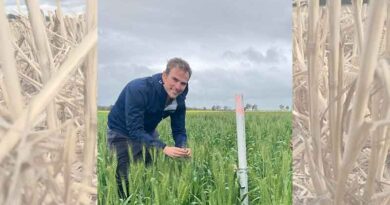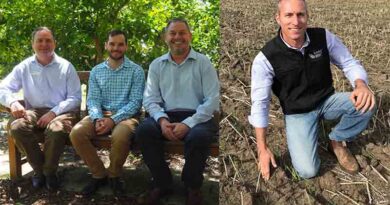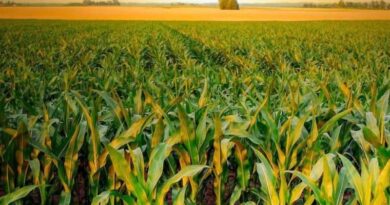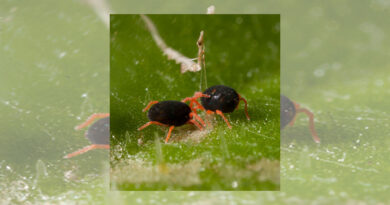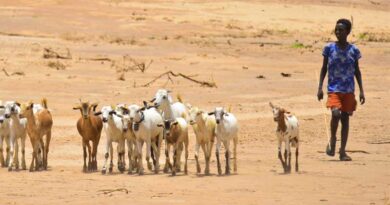Multifaceted approach to combat snails in grain crops
25 November 2022, AU: A new $4.6 million national research project is set to provide Australian grain growers with new tools and management techniques to combat snails, aiming to minimise losses and improve market opportunities for affected crops.
The four-year project has investment from the Grains Research and Development Corporation (GRDC) and is led by the University of Adelaide in collaboration with the South Australian Research and Development Institute (SARDI), working with University of South Australia, CSIRO, the Western Australian Department of Primary Industries and Regional Development (DPIRD) and other research partners.
Exotic snail species established in Australia as early as the 1920s have become major pests of grain crops.
In addition to attacking crops, snails climb crop plants in spring and contaminate harvested grain, resulting in substantial management costs, grain yield and value losses, opportunity costs, and market risks.
Lead researcher from the University of Adelaide/SARDI, Dr Kym Perry, says that snail management has improved over the years through the concerted efforts of growers, researchers, and funding bodies working together, but snails remain a costly and difficult target for management.
Crop damage, harvest delays, and grain value downgrades at delivery, are common occurrences for growers in affected areas.
“Mediterranean snails create substantial pre- and post-farm gate costs for affected growers and reputational risks for Australian grain that can affect international trade,” Dr Perry says.
“Snails are particularly abundant in some coastal regions but occur in a wide range of cropping environments where they have spread by hitchhiking on vehicles and fodder.”
The project will target four species of Mediterranean pest snails: the vineyard snail, the white Italian snail, the conical snail, and the small pointed snail. Conical snails are a focus of the project because their habit of sheltering in cryptic places, small size, and large populations, make them particularly difficult for growers to manage using existing control methods.
Dr Perry says the project would examine a range of physical, cultural, chemical, and biological tools and technologies with a view to expanding grain growers’ toolkit to combat these pests.
“This project is tackling the snail problem from multiple angles, combining technology development with biological research to inform control and deliver an integrated package of new outputs”.
“We have assembled an exciting multi-disciplinary research team to deliver the various components.”
“Field and laboratory work will investigate the effects of feeding preferences, crop rotations, migration habits, and snail barriers and attractants on snail populations,” Dr Perry says. “Additionally, we want to know more about where in paddocks snails reside at key times of year and when controls targeting snails above ground level are typically applied, so that we can adjust or design new tactics accordingly”.
“The work will also explore the efficacy and cost-benefit ratio of existing snail control tactics, by looking at how well snail populations can ‘bounce back’ from low numbers”.
Several new prototype technologies for snail monitoring and control are being developed and tested.
“We hope these technologies will become new tools for monitoring snail activity and densities in near real-time, so that growers can more effectively target their control.”
In addition, the project will explore tools to assist with the mechanical destruction of snails in paddocks in summer, and electrostatic separation of snails and grain post-harvest.
In the area of biological control, a parasitoid fly will be released in WA for the first time to help suppress conical snails.
The fly Sarcophaga villeneuveana attacks conical and small pointed snails that are greater than five millimetres in size and requires flowering vegetation to flourish.
Researchers will establish a local breeding population of the fly in WA this summer, following successful work with the same species in South Australia.
GRDC Manager – Pests, Leigh Nelson, says that snails are highly disruptive and costly for grain growers in affected areas, particularly during harvest when grain can be contaminated and cause value downgrades at receival points.
“Despite significant changes in farming practices and technology, it has been more than 20 years since engineering, cultural practices and other technological solutions for snail control have been assessed holistically,” Ms Nelson says.
“Growers need new tools as part of a systems approach for mollusc management. This investment will develop an integrated package of new biological knowledge, surveillance, and control methods, which will become tools to assist growers to better manage snails on farm.”
The project is supported by an advisory group, including direct input from growers, which will help guide planned research and outputs to ensure recommendations can be adopted by growers and identify opportunities to partner with industry.
The project More effective control of pest snails in Australian grain crops will run until 2026, with extension materials including newsletters and podcasts planned from 2023 onwards.
Also Read: Out of the Global Top 20 Pesticides, only 2 remain Patented: Study
(For Latest Agriculture News & Updates, follow Krishak Jagat on Google News)


